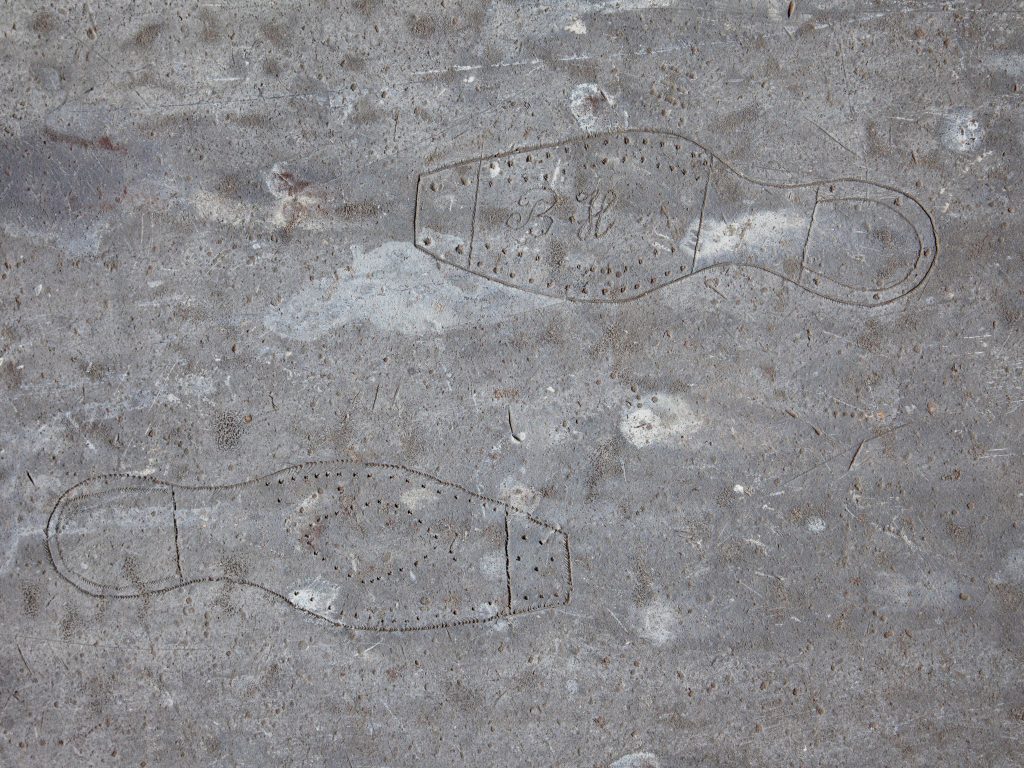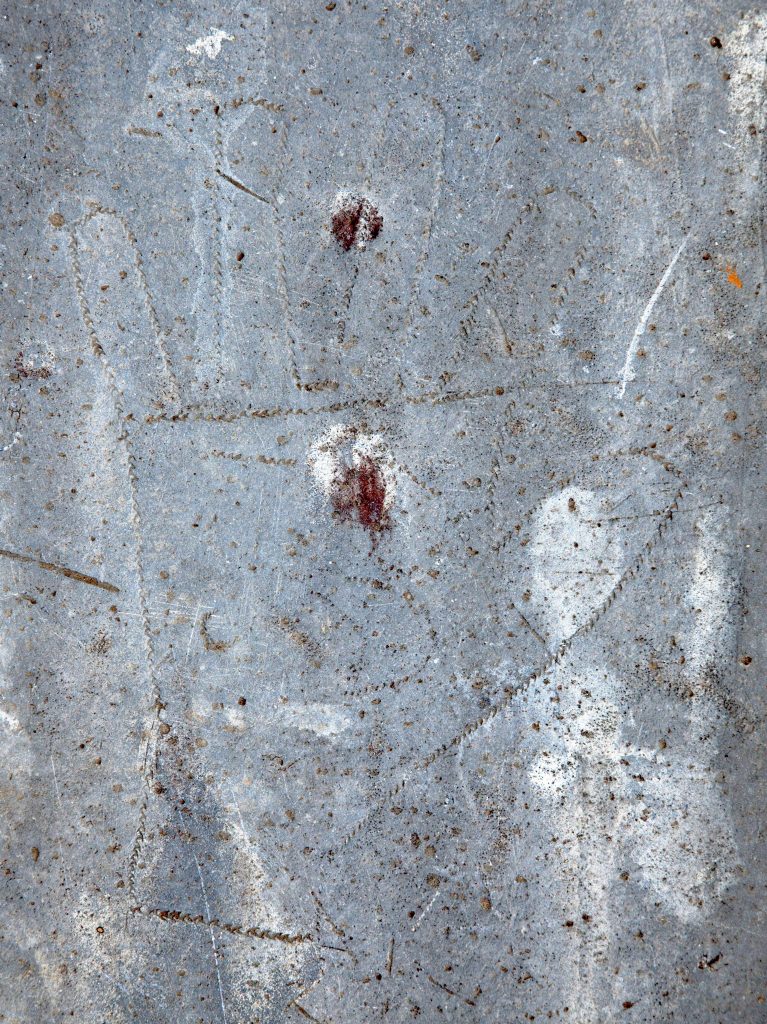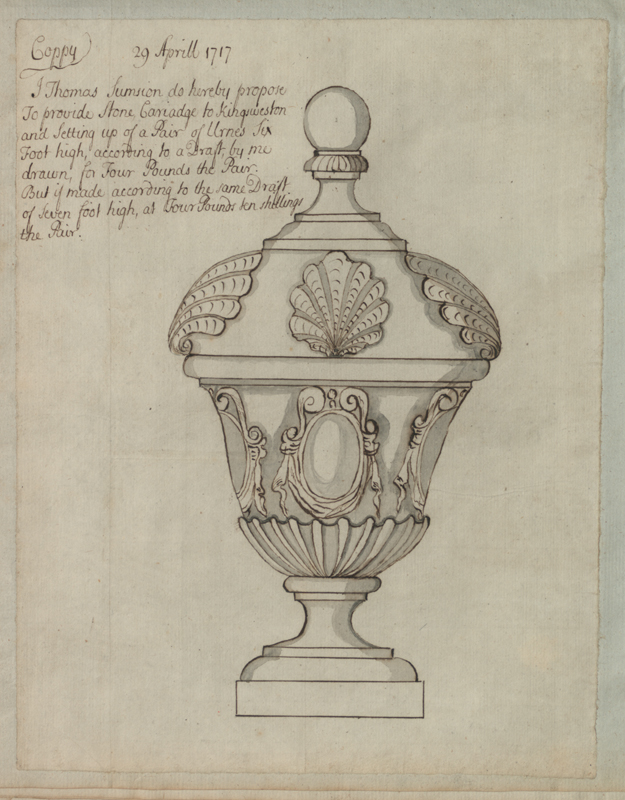
One of the most recognisable features of Kings Weston house is its roof; the castellated arcade on the top was designed to look like a fortification from a distance, and the open arches encircled a lookout platform from where visitors could admire the views across the Severn and beyond; but there’s much more up there of interest.
Although begun in 1712 the house was largely finished by 1716, enough for the rooms to be furnished and Edward Southwell to be able to move in with his second wife. However work continued on various aspects of the house; The veneered decoration on the stairs was made in 1719, the traditional completion date for the house, whilst the rooftop was the focus of continuing decorative masonry work. In the Kings Weston Book of Drawings, preserved in in Bristol Archives, there is a design for an urn intended to sit on the parapets on all four sides of the building. In total there are eight individual urns, massive stone structures that appear deceptively small when viewed from the ground; in fact they are each seven feet tall! There are three individual styles of urns, and the historical drawing illustrates the design for the pair on the “back front” of the house overlooking the service courtyard. The drawing’s dated 1717 and is one of the contract drawings given to the builders to work up, for which they would charge just four pounds ten shillings for the pair!
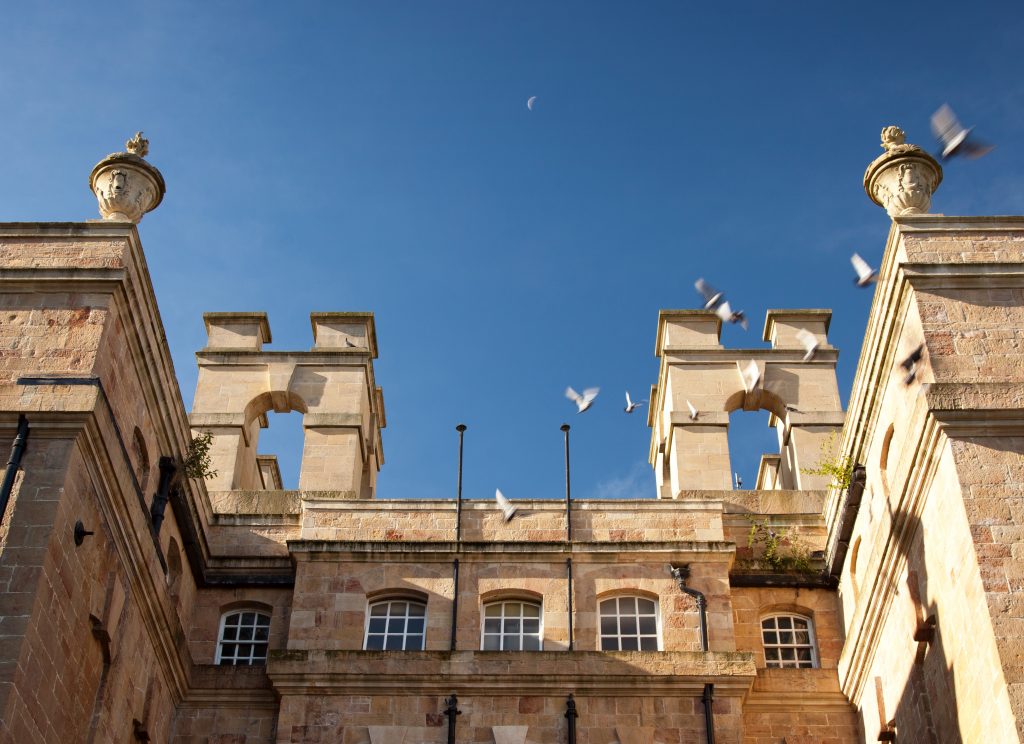
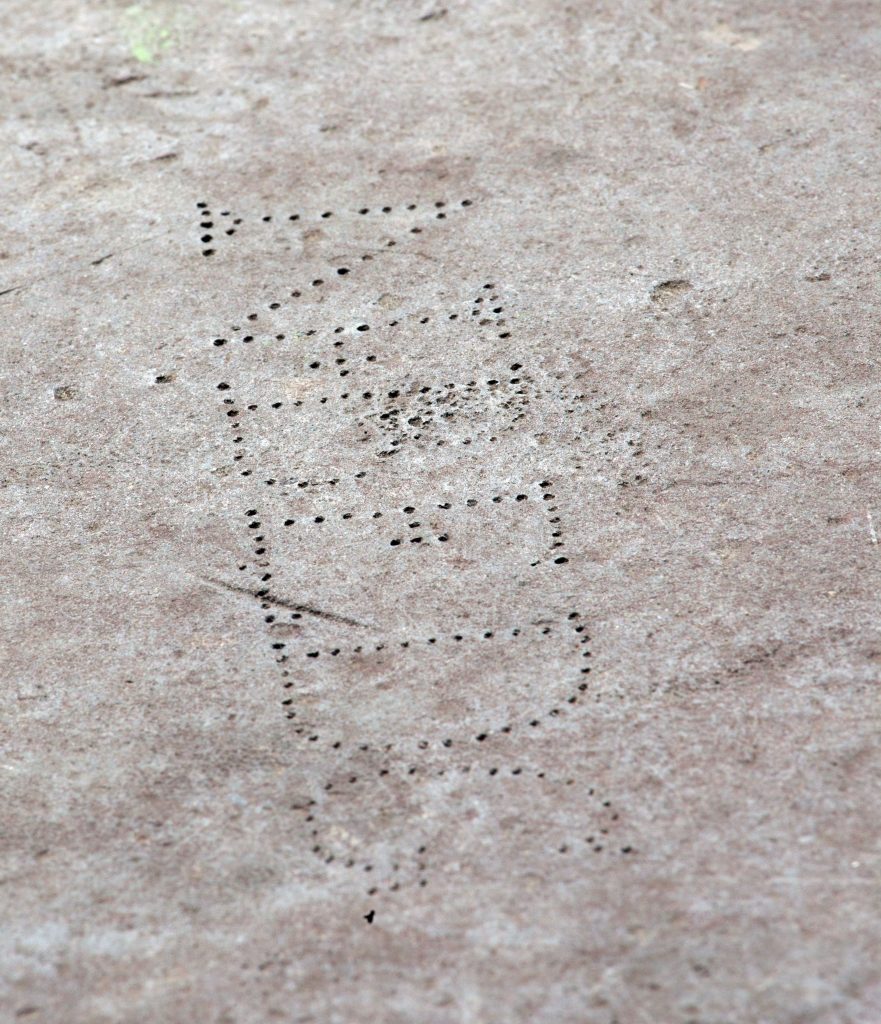
The roof itself is covered in tons of heavy cast lead sheet, some of which appears to have been on the building since it was finished, but certainly most was in place after mid-Eighteenth Century alterations. The lead itself has become something of an historical document since it was first laid; there are literally dozens of graffiti signatures and marks made by visitors to the roof over the centuries. Some are simple initials indented into the soft lead surface, others are full names, and some dated. Most are made by taking an iron tool and joggling it across the surface of the metal, giving a distinctive line almost as if it were embroidered. Others are gouged directly into the surface, but this method must have been more difficult to undertake and control.
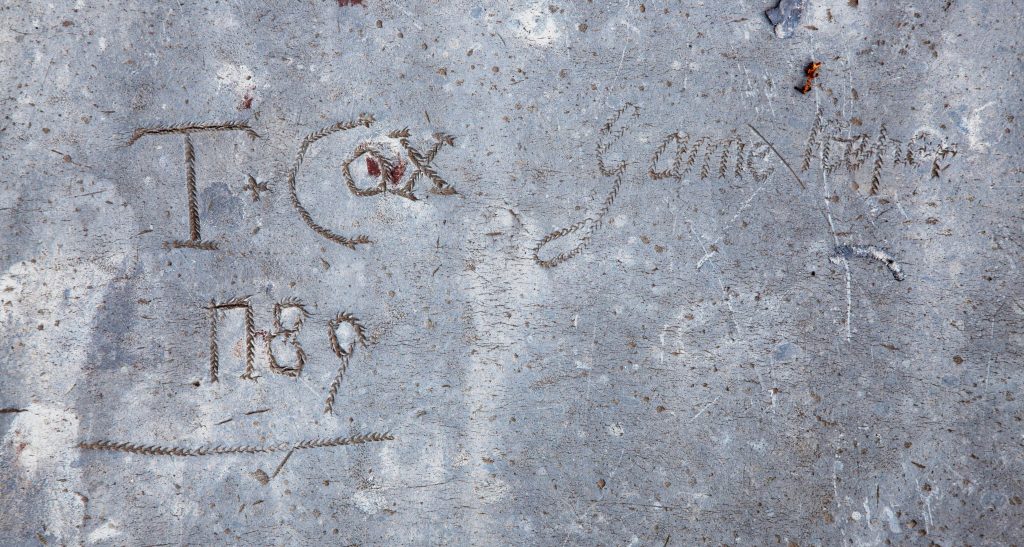
The earliest found so far is the most illuminating; dated 1789 it’s signed T Cox who was bold enough to also identify himself as an estate game keeper. Although we have a number of named gamekeepers from the house Mr Cox’s rooftop signature is perhaps his only memorial as we can find nothing more about the man.
Robert Edward signed the leadwork in 1834. This may have been a time at which the house was empty, awaiting the new residents, the Miles family, to take occupation after the Southwell family had died out in 1832. Edward, apparently proud of his work, adds the Latin ‘pinxit’, declaring he himself was responsible for the mark. N Cox was perhaps his companion on this visit as he too adopts the Latin elaboration, and goes further in adding a little cartouche about his name; was he related to Mr Cox the gamekeeper?
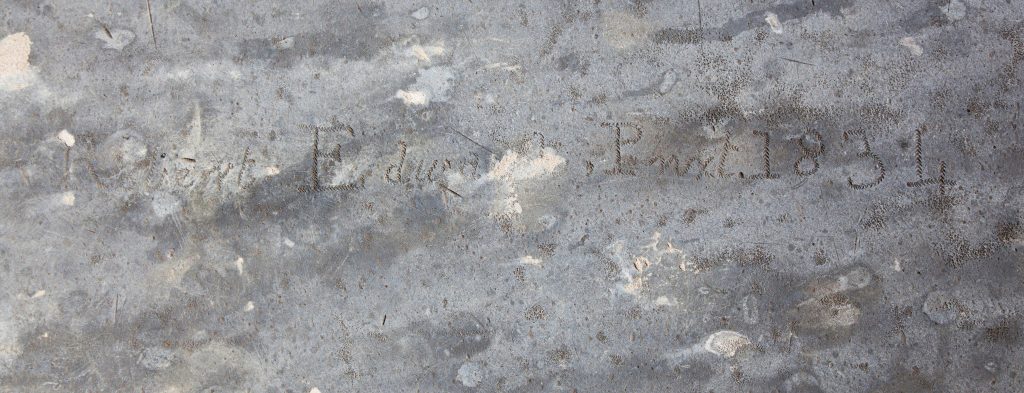
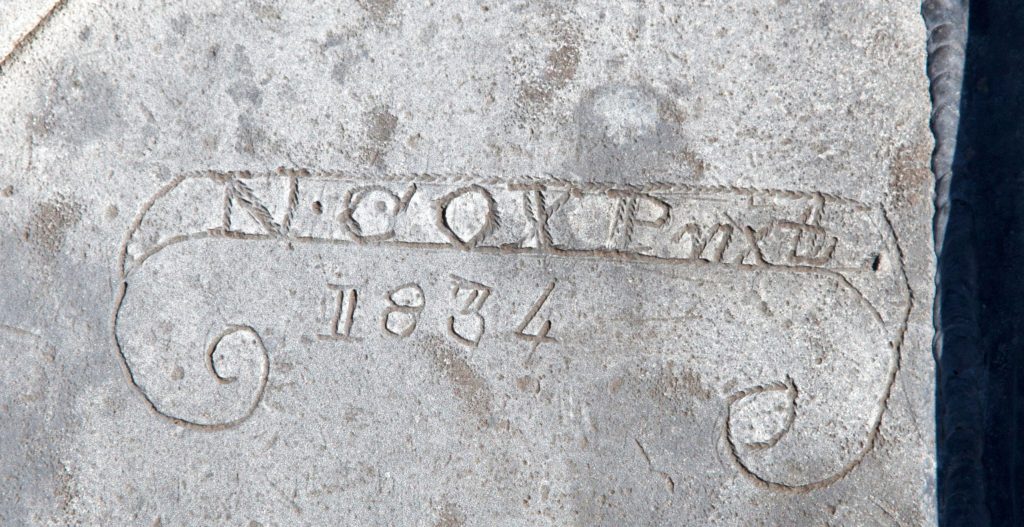
The most fascinating marks are those drawn around shoes or hands, of which there are several. Sadly only one of these is signed and it’s tempting to conclude that these men were illiterate, able only to make their mark by pictogram. The shoes, al of which are very small sizes, are distinctive shapes, with rounded heels and chisel-ended toes; does anyone know how these could be dated? The artists have embellished their outlines with the boot-nails and reinforced iron heels marked on. The hand is perhaps the most enigmatic. Only a single left hand has been discovered, it’s author no doubt using his right hand to draw around it with a steel tool.
